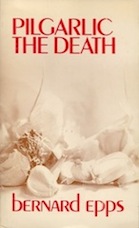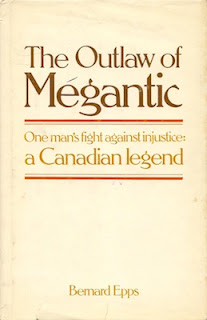Catch a Fallen Starlet
Douglas Sanderson
New York: Avon, 1960
How's this for a set-up?
Three or so years ago, screenwriter Al Dufferin and his B-movie actress wife Clare were at a Hollywood party. Al got drunk, leaving Clare at the mercy of a mobster with busy hands. Clare killed the mobster, made the papers, and moved from B to B+. Her star was still rising when she got in a fight with Al and drove her car off a cliff. Was it suicide? Al was too boozed up to notice. Hollywood hated Al for his role in Clare's death. He left town, hit the bottle even more, and ended up going from drunk tank to bug house in New York City.
Catch a Fallen Starlet opens with the Al's return to Hollywood. He'll tell you he's back to see the son he left with his sister and her husband, but really he doesn't much care. Truth be told, Al's back to redeem his name. He knows that in this town a hit will take you from hated to hero, and everyone will forget about Clare. Before you know it he's approached by aging matinee idol Barry Kevin to write an epic that has studio backing. The money is good – too good, really – and Al comes away with the gig and a list of cast members. That evening, as he sets to work on the screenplay, Al takes a look at the cast list and finds that its in his dead wife's handwriting.
We're now at page 25, with 132 to go.
Fast-paced from beginning to end, it says much about Douglas Sanderson's talent that
Catch a Fallen Starlet never seems rushed or lacking in atmosphere. Here Al drains a bottle of Scotch at bar while a group of baggy-sweatered beatniks talk in the nearby booth.
They were discussing without emotion last night's experience with last night's chick on last night's borrowed pad. A bunch of little Huysmans without the sophistication. The semiconscious fabricating a self-conscious world to live in. Two were calling one another sweet and darling. One said, "My little marrowbone." Without emotion. I envied them.
A cynical novel about Hollywood – go figure – but this is pretty good stuff:
The funeral was authentic Hollywood, a combination of internment, picnic and premiere. I arrived early. Ten thousand people had arrived earlier and waited in the atmosphere of sunshine, flowers and expectancy...
The main attraction had yet to arrive. The crowd filled in the interim as best it could. Families sat on tombstones and finished box lunches. Those with less foresight paid inflation prices for nuts and popcorn from opportunists with trays. A Good Humor man arrived and was deluged by children. Three other men with mournful faces hawked black-edged photographs of Barry Kevin in period costume – hand raised in gay farewell – superimposed on pictures of the chapel.
I gave up a bit of a spoiler there, so will cut this short before ruining things entirely. If by chance you spot this book, grab it; of the five Sandersons I've read, it's surpassed only by
Hot Freeze.
Finally, to nonbelievers who see the influence of Messrs Waugh or West, I ask: Is it really possible to write a Hollywood novel that isn't cynical?
Mystery: Both the French and Italian translations give the original as
The Stubborn Unlaid, but no edition exists under that title. Our man in Los Angeles
Kevin Burton Smith suggests that Avon changed the title while the translations were at press... that or Sanderson was playing fast and loose with foreign language rights. Both translation were published under his "Martin Brett" pseudonym.
Object: A fairly fragile mass market paperback with ads for "SIX MORE FINE MYSTERY-SUSPENSE NOVELS FROM AVON YOU WON'T WANT TO MISS". The cover copy on the back misleads:
...they hung a phony murder rap on Al and he set out to blow that lid sky-high – no matter how many reputations went with it!
In fact, there is no murder rap, phony or otherwise.
Access: Five Very Good and Near Fine copies are currently listed online, ranging in price from US$10 to US$22. Ignore the bookseller offering a Near Fine US$50.
Out of print for more than four decades, in 2004 Stark House reissued
Catch a Fallen Starlet with Sanderson's other 1960 novel
Pure Sweet Hell. Not quite as pretty a package as the Avon first, but it is built to last and includes essays by the author's son and Kevin Burton Smith.
Library and Archives Canada aside, I can't find a single Canadian library that has either edition.
The French translation,
Cinémaléfices, was published in 1960 by Gallimard as part of its
Série noire. Canadian library patrons appear to be completely out of luck on this one.
One lonely copy of the Italian translation,
Cast di Morte (Milan: Edizioni Giumar, n.d.) is listed for sale online. Price: €22. There's not a library copy in sight.



























































